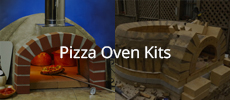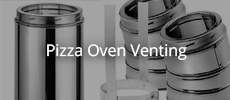More Stucco - Smooth Coat
Well, two more days of Stucco work and I've got the brown coat about done, just one side left to get smooth. I'm going to quit for awhile after that side and let it harden. Then all that will be left is texture and paint.
I've been using the premix stucco product from the building supply place. It has fiberglass threads in it to make it crack resistant. Not really much different from the sand/portland mix I was using before, but I trust the fiberglass will help. It also claims it's a "1 coat" product. I'd already scratch coated half the building, so that half has a scratch coat and a smooth coat with this stuff. The other two sides just have 1 coat, and I can't tell much difference between them at this point.
I've found that the trick to Stucco is to get the substrate damp, mix the stucco pretty thin, and move quickly. Don't fuss over small defects, just let the area set up for 30 mins or so and then take a damp sponge to the surface to remove irregularities.
The eaves are done, I don't plan to texture them. Just primer and then good quality elastomeric paint.
X
-
Re: Saint Helena Oven
Well thanks for the compliment Nick, but no masonry courses in my future. I'm pretty happy with the results to date though, I'll admit.Originally posted by redbricknick View PostAre you kidding? A stucco tutorial? You could teach a masonry course with the workmanship displayed here. How long has it taken you from start to now? Have you been working mostly weekends? After work? Stucco is easy. The directions are on the side of the box. If in a pinch, grapenuts work awesome as stucco. Try cleaning them off the side of a cereal bowl after a couple of days..
I started in earnest in late September, so it's taken me just under 4 months. Worked only weekends and a little over the Thanksgiving and Christmas Holidays. Probably have 15+ full days into it, although 3 sons and a wife don't often allow me to dedicate full days.
I've about finished the smooth stucco coat (brown coat), I'll post some pics.
Leave a comment:
-
Re: Saint Helena Oven
Hi Marcel,
I didn't pre-wet the backer board, good idea though as I think it dried a bit quickly and probably didn't get as strong a bond as possible. I'll try that on the next section.
I did use Hardibacker. It's the Ultimate Concrete Backer Board. I know because it says so all over it! :-)
I chose it for the same reasons as you, Durock crumbles easily and is harder in general to work with. Hardibacker is lighter, thinner, and seemingly more durable.
Leave a comment:
-
Re: Saint Helena Oven
(M) Jaysea (John),
(M) Did you pre-wet your backer board before puting on the "scratch coat? ___
(M) It looks as though you chose "Hardibacker". I particularly like that product. It is lightly pre-grooved so if you mounted it to "level" you have some idea of vertical and horizontal, as well as even spacing while attaching screws, etc.
(M) "Hardi" IMHO, has less of a chance to crumble when cutting since it has no fiber mesh like, I believe, "Durock" or "Wonderboard". It is relatively light, thin, strong, and you can take a blow torch to it without fearing combustion.
(M) They make it in different configurations. I used "Hardiplank" because I wanted a shiplap look. Mine looks like wood because it has a soft grain impression but it is completely fireproof.
(M) I'm making a "pitch" for "Hardi" but I don't have any connection with the company.
Ciao,
Marcel
Leave a comment:
-
Re: Saint Helena Oven
Are you kidding? A stucco tutorial? You could teach a masonry course with the workmanship displayed here. How long has it taken you from start to now? Have you been working mostly weekends? After work? Stucco is easy. The directions are on the side of the box. If in a pinch, grapenuts work awesome as stucco. Try cleaning them off the side of a cereal bowl after a couple of days..
Leave a comment:
-
Stucco Scratch Coat Started
Well, I started on the stucco scratch coat. No clue what I'm doing, but I'm more confident after the first side.
I was going to to buy some fancy "crack resistant" stucco at the building supply place but they were closed given it's Dec 24. I made my own with 1 part lime, 1 part portland, 3 parts sand. Seemed very workable, we'll see how it hardens.
I also opted to not put metal lathe or corners over the cinder block and concrete backer board. They didn't have that stuff at our local supply place, and I didn't think it was totally needed. If I'm able to knock the stucco off after it dries then I'll lathe over whatever I can't easily scrape off. I'm very confident it will stick to the cinder block, unsure on the backer board.
I put it on thin and fairly smooth, then scraped over it with a v notched morter trowel to scratch it.
I think it's looking fine.4 Photos
Leave a comment:
-
Re: Saint Helena Oven
Hi Marcel, I'm John (C). I started using the very funny spelling of JC as a web alias as it's rarely taken.
I've had the oven much hotter since I cooked those Thanksgiving Pizza's so I now realize what you mean. It takes a fair bit of wood to get the dome clean, but it sure is hot inside when you get there.
Thanks for the compliment, but I'm just getting good at taking pictures that don't show the flaws!
Leave a comment:
-
Get that dome white hot
(M) <snip> Jahysea are we privileged to know your regular name, or is it jahysea?
(M) This posting is partly out of chronology since I have read the most recent posting of 12/22/06 and seen the images of your excellent building craftsmanship! Really nice work, including the granite tile ledge. Congratulations!
(J) "Pizza's number 2 and 3 got eaten before I could take pictures, but I've attached one of pizza number 4.[/quote]"
(M) The pizza looks wonderful and I shouldn't argue with success but I see some soot on the inside of the walls of your dome. If the top is white from having had the soot burned off, then that should be fine but if the dome is sooty then perhaps you would get even better results if you got your oven truly up to at least 650 F. for the pizza.
(M) Thanks for sharing the great close-up images. My work looks like an amateur compared with yours.
Ciao, and Happy Holidays,
Marcel
Leave a comment:
-
Granite Ledge.. Insulation, etc.
Well, I've now wrapped the oven in insulfrax (thanks James) and poured 7+ bags of vermiculite into the cavity. I wish I'd built larger dead spaces into the corners instead of just piling my extra cinder blocks into the corners to fill space. Would have saved me some vermiculite $.
I've also permanently attached the roof with ribbed flashing along the lower side to keep bugs and birds out. Will need some caulk to truly keep bugs out.
Most visually significantly, I've got the granite shelf in place. I used 12" granite left over from our earlier outdoor kitchen project with matching "facia" granite pieces. I think it looks great, and ties well to the outdoor kitchen.
I've uploaded some pics.
Only thing really remaining is stucco. I've never stucco'ed anything and haven't found too much out there on the internet about it. If anyone knows of a good tutorial I'd love to check it out.4 Photos
Leave a comment:
-
No more metal studs...
I let the chimney cure for a week before firing it, and I couldn't be happier with the way it draws. No more smoke coming out the front, maybe I can work the oven and not stink so much my wife makes me shower before coming to bed!
I spent some time this weekend cladding the oven with masonry board, no more metal studs visible. I think my list of things to do is down to stucco, granite on the front shelf, a door, and flashing around the chimney and roof edges.
I also stacked my leftover cinder blocks in the outside corners to take up some dead space and poured in 3.5 large bags of vermiculite. Nowhere near enough vermiculite, the nursery ordered me 4 more large bags. I'll have to take the roof off again to pour it in.
Starting to look more finished though! Off to start some food, oven's hot...5 Photos
Leave a comment:
-
Great look with the exposed flu tile and the corrugated roofing. Sort of industrial/sleek. I think David's idea of insulating the flu tile below the roof is smart - it will help the flu tile retain heat which should improve the draw. It's probably not essential, but it may reduce the likelihood of smoke exiting the front of the oven.
A few more trim pieces on the perimeters will give the corrugated a cleaner look - maybe that will appease your wife's concerns.
Leave a comment:
-
Roofing!!
There is a great new steak place in St Helena called Press, and the building is beautiful, with a simple corrugated metal roof. I decided if the roofing wasn't too expensive I'd go that route. I'm a little worried that it will look too much like a tool shed, but decided the corrugated roofing would make decent tile underlayment if I hated the look. And I could get waterproof very quickly. This latter point turned out very important as it started raining this morning!
The roofing material and matching ridge caps was only about $100, so I'm pretty happy with this route. The only catch was the $36 giant box of special screws I bought. I've only tacked the roof in place thus far, but I won't even dent the box of screws. They are rust proof and each screw is pre-assembled with a rubber and metal washer. Nice stuff. They were supposed to be self piercing but I found it easier to drill small holes.
Roofing took a few hours, I finished after dark. I only tacked it all in because I'm unsure of the overhang needed at the edges to cover whatever I face the metal facia with. I have some room to move them upward and downward because the ridge pieces go about 5 inches down on either side.
I also need to take the roof back off to pour vermiculite in after finishing the sides.
I think the metal roof looks great now that it's in place. The wife's first words were "you are covering that up, right?" Time will tell I suppose. At least it's watertight other than flashing around the chimney and the top of the chimney. I set a loose extra piece of ridge on top of the chimney for now, need to find or fabricate a cap. If I can't find something nice, I'll cut a leftover piece of flue pipe in half vertically and mortar it on top with some screen at the sides. Stolen concept from the DrakeRemoray oven.3 Photos
Leave a comment:
-
Facia and sides
After getting the roof stringers up, I took Marcel's advice and put the siding on before attaching the facia plates so that I could screw the tops in. First picture shows this.
To attach the facia, I simple butted the facia boards against the roof stringers and used some small strips of metal to attach them. In retrospect I could have left tabs on the roof stringers for this, but I had a different plan at the time. It worked, seems pretty rigid. When it's all clad nobody will ever see it.
Pictures 2/3/4 demonstrate this.4 Photos
Leave a comment:
-
Chimney, etc.
Thanks David, the chimney does seem pretty solid, not that I've beat on it or anything. Wrapping it in chicken wire and vermiculite concrete below the roofline is an interesting idea, I'll give it some thought.
Thanks Marcel, I'm happy with the dual beam roof configuration as well. I like your wrap around, I did look at all the pictures of your oven before I even started. You were one of the only folks I saw that put an air valve in your flue. Good idea to keep heat in, and needed because of your door style. After looking at a friends contractor made oven, I opted for the longer tunnel into my oven so that I can variably place my door. My freestanding door will be able to rest inside or outside the chimney opening.
Leave a comment:
-
Chimney at last
This morning I put the Chimney on my oven. I tried cutting the clay flue pipe with a regular angle grinder with an abrasive wheel and it went well. I think I have softer flue pipe that some others have had.
I wore out one $2 wheel entirely and started in on another, but the whole thing took only about 20 minutes.
The first picture shows the cardboard I used to trace the cutout, the flue pipe, and my grinder.
The second pic shows that piece of flue pipe dry fitted to the oven.
The third and fourth pics show the cutout I needed to make in the tray/plate above the front, and the cutout itself.
The fifth pic shows the finished chimney.5 Photos
Leave a comment:





Leave a comment: